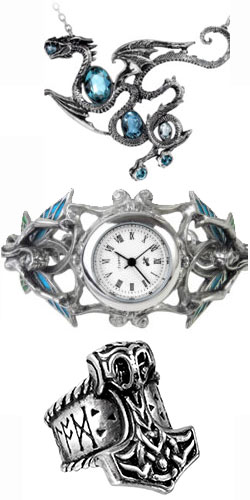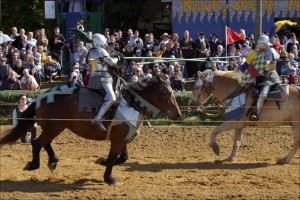How to Dress Renaissance
Games of the Renaissance: Pastimes of the Courtly Classes
During Renaissance times, it was the courtly class who had time and circumstance on their hands to enjoy a life away from working in the fields or doing other types of menial labor to meet the demands of everyday life. Royalty developed a number of ways to entertain themselves. Dancing, sports and other games of the renaissance all flourished as a part of Renaissance life.

A look at the young French King Francois I, who was born in 1494, shows that he and his acquaintances hunted, fenced, wrestled and played tennis together in order to while away the hours. Other beloved sports included jousting, a sport carried over from the Middle Ages in which men in armor on horseback participated in mock battles, often carrying sharp lances in attempt to unseat a rival from his horse.
Evenings would find the young king and his courtly circle of friends relaxing after dinner as they listened to musicians playing instruments such as the flute, the lute, and viols.
Frenchman and Master of the Dance Thoinot Arbeau, who was born in 1519, wrote a manual of dance instructions for wealthy patrons. He instructed fashionable clients in dances such as:
- Pavans: Often paired with the Galliards, the pavans were slow, processional dances in which many couples paraded wearing elegant, decorative clothing. Couples often did creative movements in tandem with smaller groups within the larger procession.
- Basse dances: A slow, gliding couples dance wherein the participants’ feet never leave the floor as they do in livelier types of dances.
- Galliards: A favorite dance of Queen Elizabeth I, the Galliard featured a five-step rhythm and was a rather athletic dance. It contained leaps, jumps, hops and other athletic moves.
- Lavoltas: Similar to the Galliard, a Volta involved a type of turning and lifting of the female in a rather closed position.
- Gavottes: Based on an old French folk dance, the Gavotte was often a collection of double branles danced in a line or circle, including small springs in the steps.
- Various types of Branles: A type of couples dance in which partners would move from side to side, the Branle often marked the beginning of a fancy dress ball.
Arbeau’s famous book, Orchesography, is often used today to teach Renaissance dances as well as to teach manners of the court.
Other games of the Renaissance included card games, which were highly popular among the women of the courts. Women also enjoyed challenging men to a game of chess or even joining them in the hunt. They participated in falconing and hare hunting while on horseback. One popular after-dinner game enjoyed by courtiers was the game of croquet.


